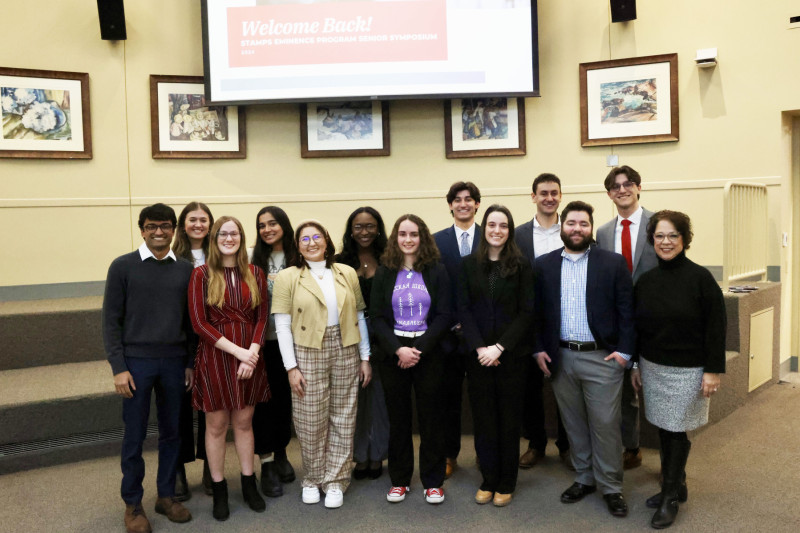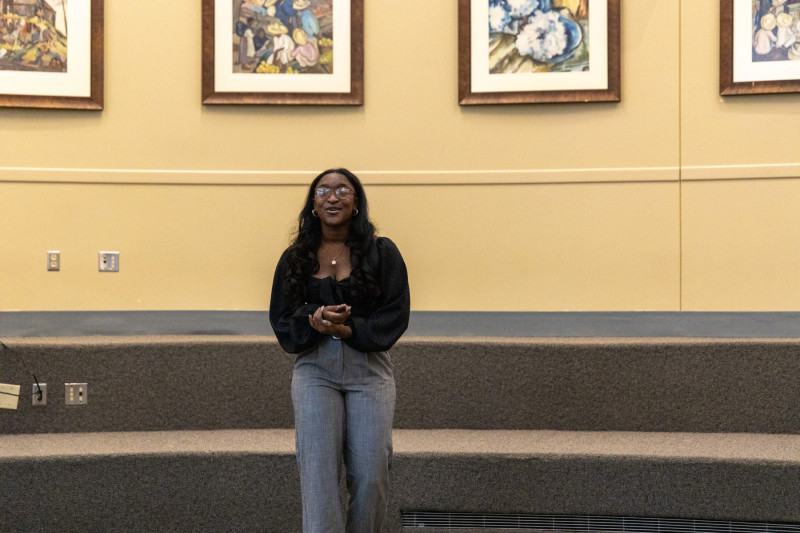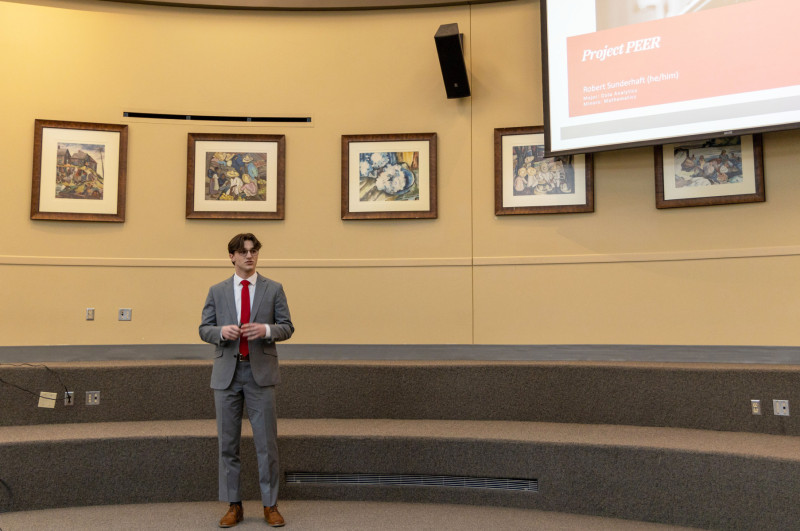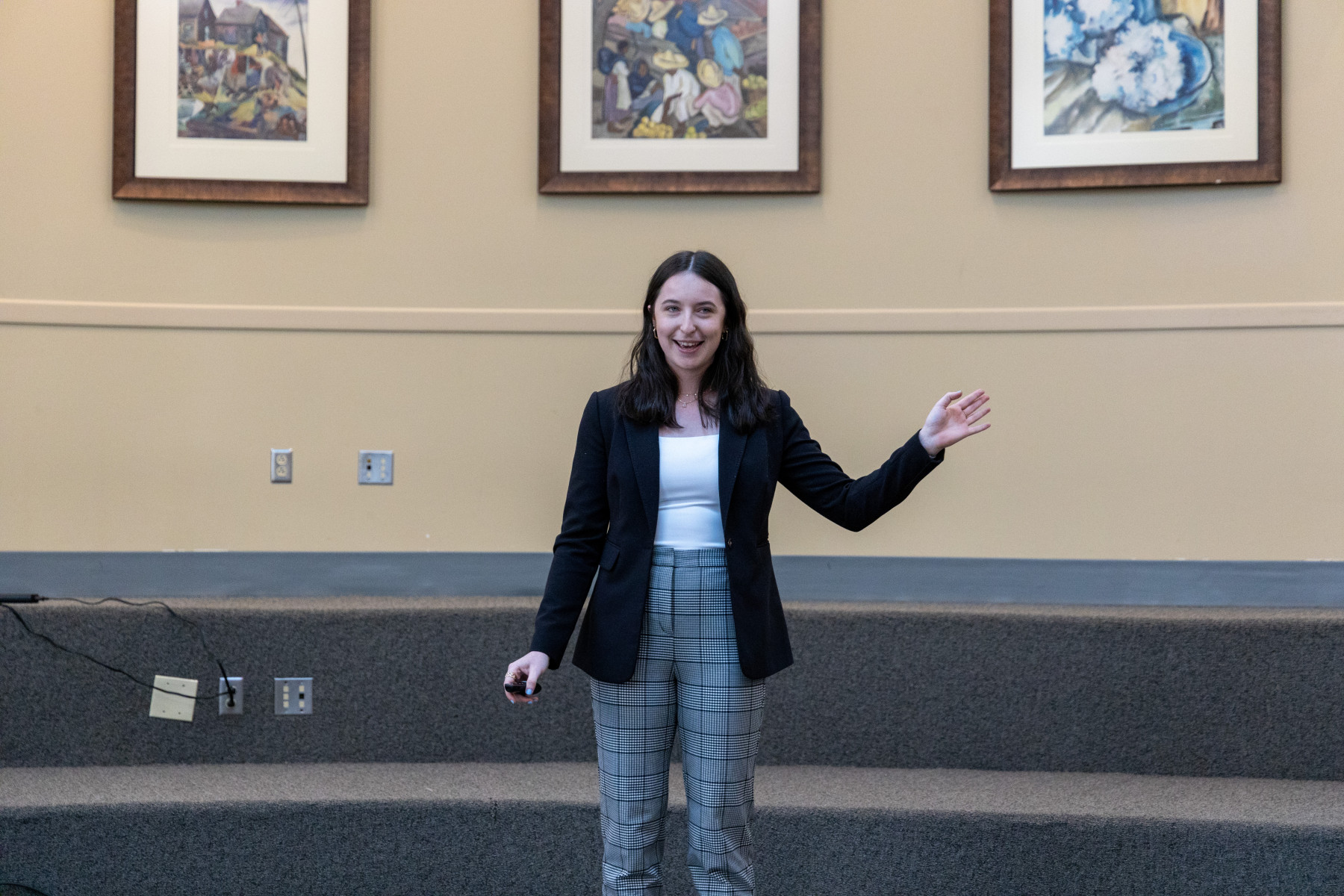Research into traumatic brain injury recovery, reducing maternal and infant mortality rates, and increasing educational opportunities for incarcerated individuals are among the projects led by The Ohio State University’s Stamps Eminence Scholars Class of 2024. Fourth-year students presented their research at a Jan. 18 symposium at the Ohio Union on the Columbus campus.
The Stamps Eminence Scholarship Program offers a $5,000 enrichment grant to undergraduate students to create service projects. Scholars also receive access to research and leadership opportunities.
“Students benefit in a number of ways. One way is they learn collaborative leadership, they learn how to come together, maybe with differing ideas, and agree on a course of action and how to implement it,” said Rebecca Ward, program manager. “Another way they benefit is it gets them out of the academic space, where they’re really firmly rooted, and it puts them in the community. It gives them a chance to get to know the community and learn and grow in a different way.”
In her service project, Jessica Mitsch, a neuroscience major, volunteered as a student researcher in the Wexner Medical Center lab of Olga Kokiko-Cochran, an assistant professor in the College of Medicine. The lab studies how genetic predispositions for Alzheimer’s disease impact recovery after a brain injury.
“Studying these genes and studying these environmental risk factors like brain injury are very important to seeing what exactly happens to the brain,” Mitsch said.
“We can give these results that we find to clinicians, and they can better help patient populations. As I graduate and I continue on my path toward becoming a physician, I will cite all these factors I studied here in my few years at this lab. And I especially won’t forget the many faces behind this disease.”
Robert Sunderhaft, a data analytics major, worked with Project PEER, an organization founded and operated by Ohio State students to increase educational opportunities for incarcerated individuals.
“Our solution is called the learning community,” Sunderhaft said. “It’s where we take incarcerated individuals and Ohio State volunteers and bring them together for collaborative and impactful discussions. … We’ve talked about things like mental health and happiness, all the way to the extreme of quantum entanglement – a really complex idea, but it was a phenomenal discussion.”
Seyan Coco, a public health major with a specialization in sociology, spearheaded an initiative to address maternal and infant mortality and reduce socioeconomic disparities.
Coco’s research indicates that “maternal mortality is on the rise for all populations of women in the United States right now,” she said.
“In America, there absolutely should be a medical landscape where all people have access to the same high-caliber resources and can enter medical environments knowing that their pains aren’t ignored or dismissed. And that’s the medical landscape that I hope to bring about at the intersection of medicine and public health.”
Natalie Sebunia, a zoology major, launched a project to preserve eagles, falcons, vultures and other raptors that contribute to the environment.
“Imagine walking out onto the Oval [on Ohio State’s Columbus campus] and seeing thousands of mice scurrying around. … Luckily, we don’t have to deal with rodent control to that extent, and we can thank raptors for that,” Sebunia said. “They are very important ecological contributors for us and help control population levels in our ecosystems.”
Ohio State’s Stamps Eminence Scholars Class of 2024 also includes:
Angelina Atieh, biomedical science
Peter Cooper, history
Margot Hare, linguistics, Russian and computer and information science
Andrea Hefferan, marketing
Abigail Longstreth, economics
Elizabeth Morgan, microbiology
Devi Dheekshita Nelakurti, biomedical science
Drew Polito, economics
Kai Richmond, psychology
Gus Scaria, neuroscience
Jaideep Seth, biochemistry and history
Zoë Shay-Tannas, industrial design
For more information about the Stamps Eminence Scholarship program, visit the program’s website.



